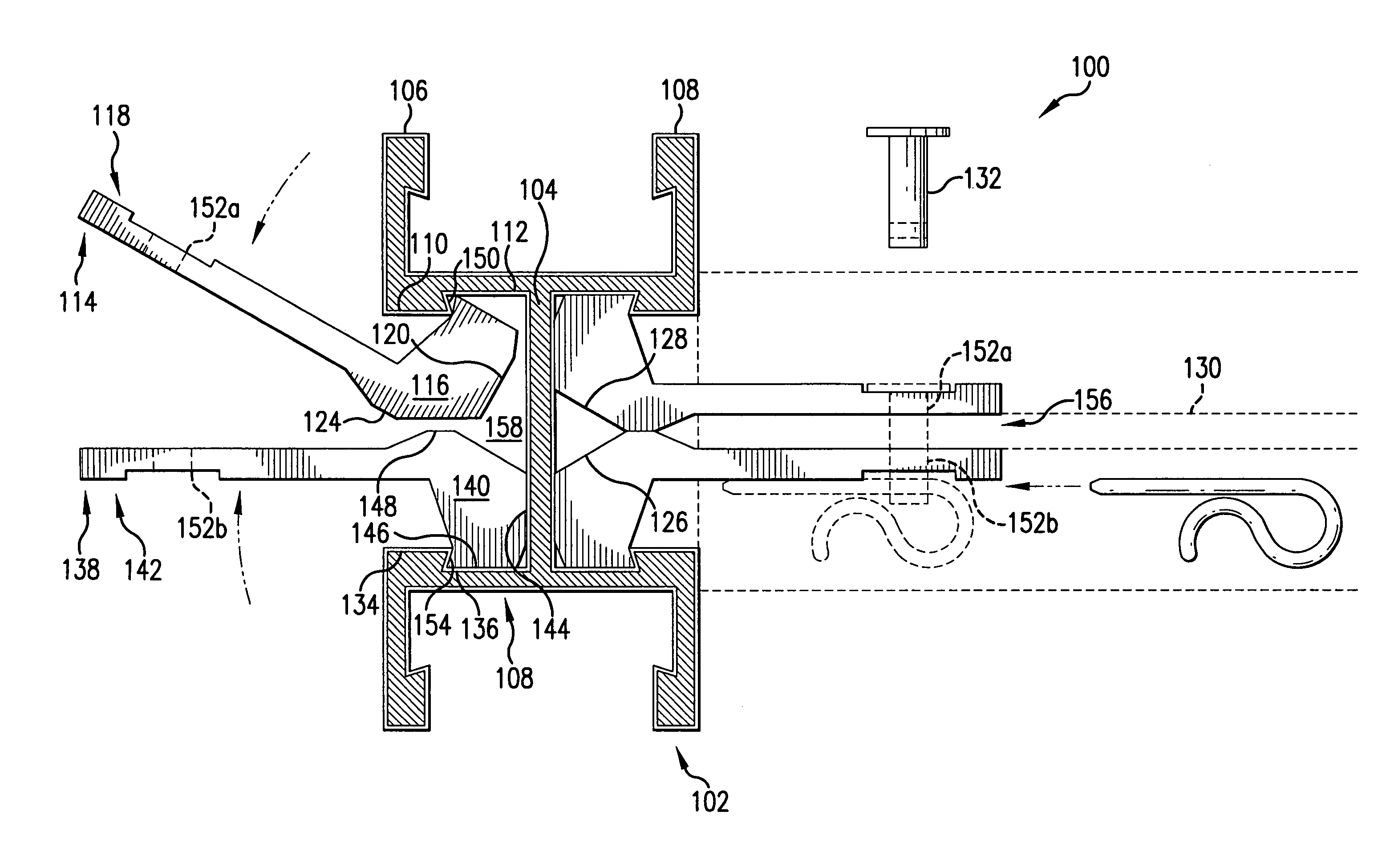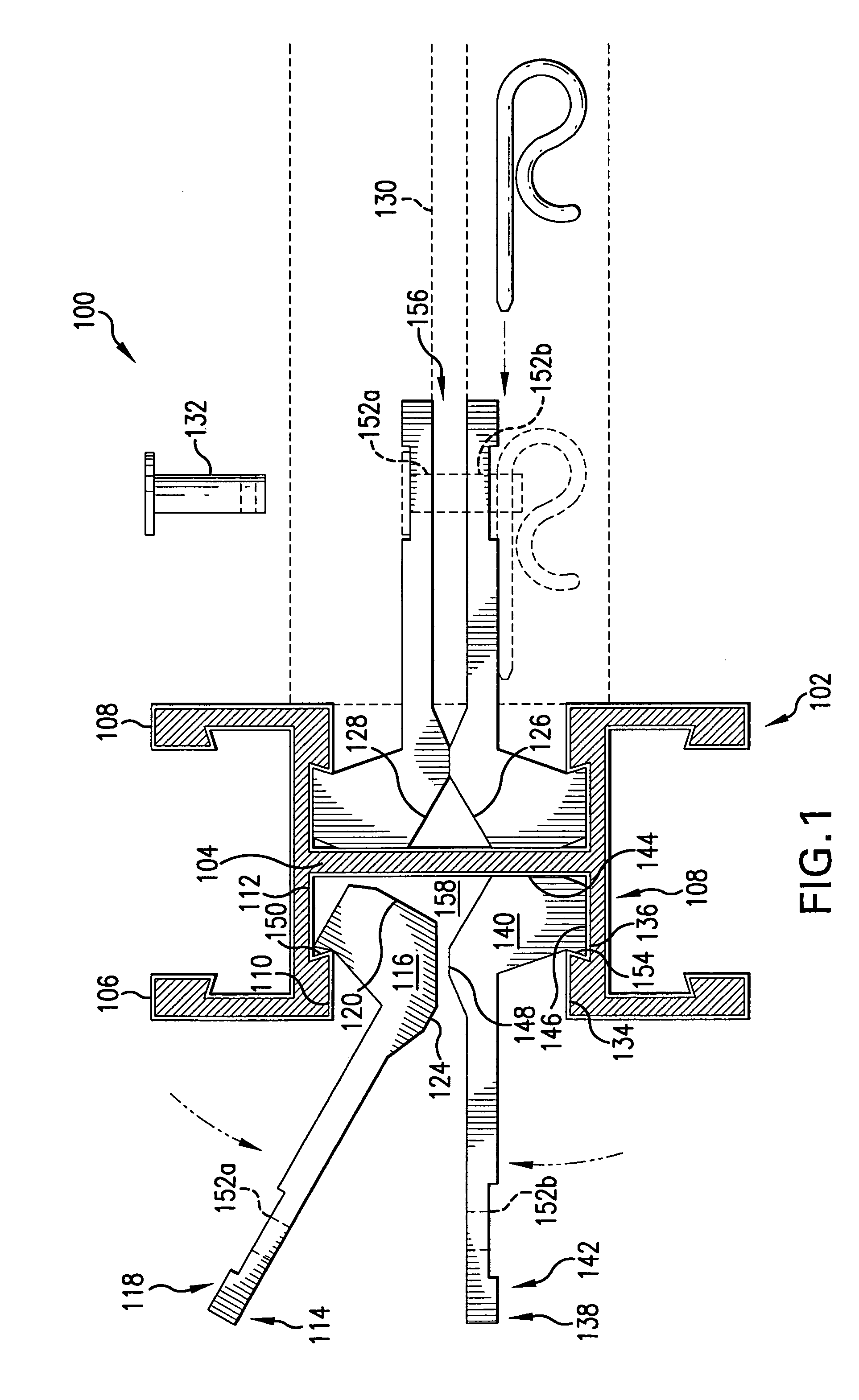Modular frame connector system
a technology of modular frame and connector system, which is applied in the direction of girders, joists, buildings, etc., can solve the problems of difficult adjustment of frames that are nailed or bolted together, special problems of modular construction, and difficulty in adjusting frames
- Summary
- Abstract
- Description
- Claims
- Application Information
AI Technical Summary
Benefits of technology
Problems solved by technology
Method used
Image
Examples
first embodiment
[0026]In FIG. 1 is shown a modular frame connector system 100 according to the present invention. Modular frame connector system 100 may include a beam, stanchion, column, pillar, or post 102 having a web 104 and a front and rear flanges 106 and 108 which are disposed fixedly on web 104. The designations “front” and “rear” as used herein are merely convenient labels for various elements and are not intended to imply any particular physical orientation or order of installation.
[0027]In several embodiments, post 102 may be similar to an I-beam or a W-beam, such as a modified wide flange beam as shown in FIG. 1. This profile and others shown in FIGS. 2-4, 5D and 5F may be used as a post, beam or rafter. In several embodiments, post 102 may have a skin made of a brake-formed or extruded metal substantially resistant to oxidation, such as aluminum. The skin may also be made of a coated cold- or hot-rolled steel, such as galvanized steel. Post 102 may have either no core at all, as shown ...
second embodiment
[0047]In the invention, illustrated in FIG. 6, one or more fastening plates 614 may be used. This embodiment may be referred to as a type “B” fastener. This embodiment may be used with a structural member 630 that has been rotated 90° with respect to a channel 658, as may be the case for joists, purlins or certain wall conditions such as ties. Aperture 652 in fastening plate 614 may flank structural member 630. Fastener 632 may be inserted through aperture 652 and structural member 630. More than one fastener 632 may be used.
[0048]In one embodiment, structural member 630 may be disposed proximate to a pierced end 618. In one embodiment, a fastener may be disposed pierceably through aperture 652 and structural member 630. In one embodiment, the fastener is any suitable fastening device such as, for example, a pin, a bolt, a rivet, or a spike. In several embodiments, structural member 630 is a second post, a beam, a joist, a stud, a panel, or a fastener.
[0049]In one embodiment, a post...
PUM
 Login to View More
Login to View More Abstract
Description
Claims
Application Information
 Login to View More
Login to View More - R&D
- Intellectual Property
- Life Sciences
- Materials
- Tech Scout
- Unparalleled Data Quality
- Higher Quality Content
- 60% Fewer Hallucinations
Browse by: Latest US Patents, China's latest patents, Technical Efficacy Thesaurus, Application Domain, Technology Topic, Popular Technical Reports.
© 2025 PatSnap. All rights reserved.Legal|Privacy policy|Modern Slavery Act Transparency Statement|Sitemap|About US| Contact US: help@patsnap.com



